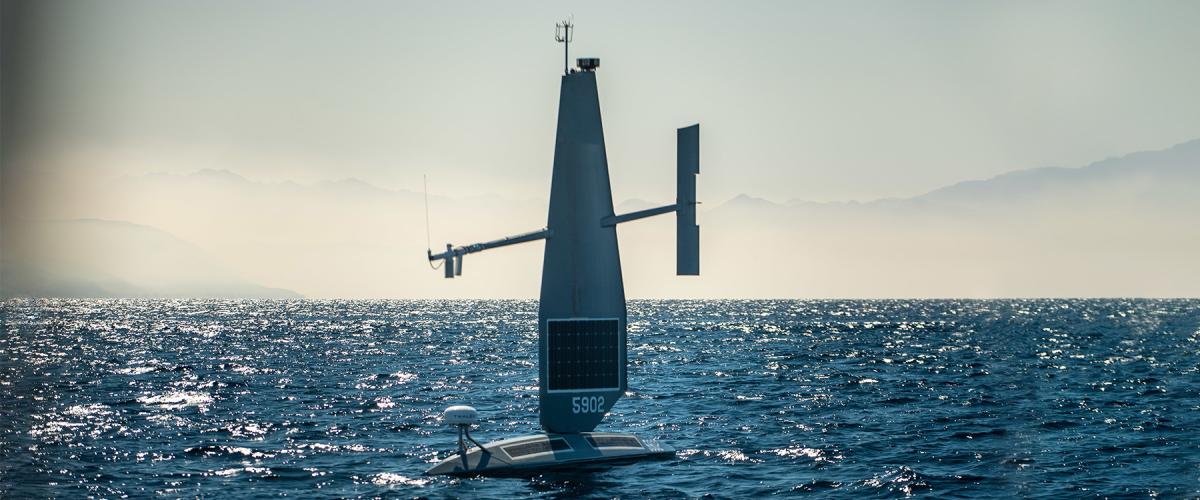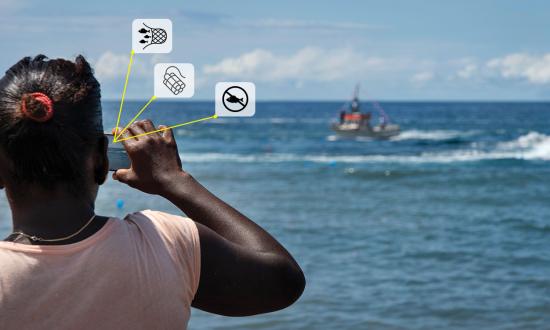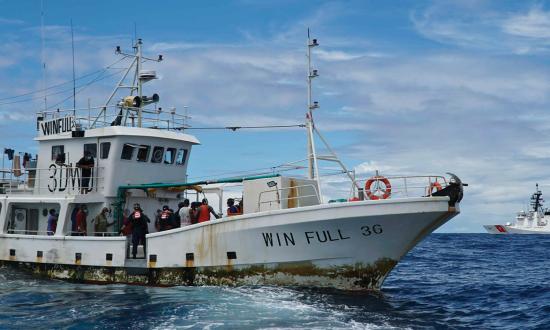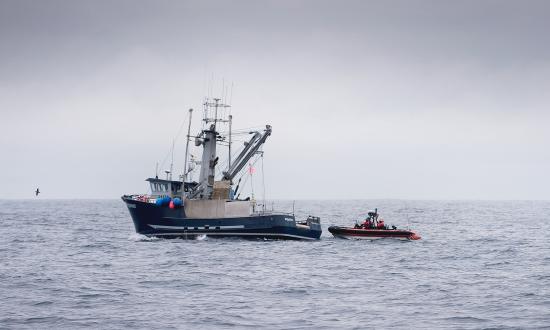In the opening scenes of Top Gun: Maverick, Admiral Chester Cain tells Maverick, “These planes you’ve been testing, Captain, one day, sooner than later, they won’t need pilots at all . . . the future is coming, and you’re not in it.” The Coast Guard faces a similar reckoning. Autonomous technology is an attractive solution to many maritime security challenges. Autonomous oceangoing vessels, for example, could be a critical force multiplier in combating illegal, unreported, and unregulated (IUU) fishing. As the Coast Guard continues to increase its support of a free and open Indo-Pacific, it must expedite the deployment of autonomous technology to build its capacity to monitor, detect, and deter IUU fishing.
USVs as Deterrence
The presence of Coast Guard assets deters illegal fishing to some extent. This likely would be the case whether the asset were a cutter or an autonomous USV patrolling the high seas. If bad actors know a Coast Guard asset is in the area, they are more likely to check their practices and location before setting fishing lines.
When a Coast Guard vessel is unavailable or unable to operate in a region for an extended period, autonomous USVs could be used to observe, detect, and deter IUU. In addition, the data collected by the USVs could support global transparency efforts and supply allies with critical information within the maritime domain. Following President Joe Biden’s recent announcement expanding the Pacific Remote Islands Marine National Monument, USVs could be used to provide presence in waters that are far from any support or persistent presence from a Coast Guard asset.
Commercially Available
USVs already have proved to be a viable tool for maritime domain awareness. The Coast Guard conducted a 30-day proof-of-concept in 2020, testing three different autonomous uncrewed surface vehicles. Yet, three years later, these “low-cost maritime domain awareness” solutions have yet to see active use by the Coast Guard. As the pilot study report noted, USVs could be a useful in identifying fishing vessel activity and supporting search and rescue. Further, reports from USVs could allow the Coast Guard to adaptively deploy cutter assets to areas of concentrated fishing effort.
USVs are already supporting maritime domain awareness in other regions. The Saildrone has undertaken both maritime security and scientific missions. For example, the National Oceanic and Atmospheric Administration (NOAA) tasked three Saildrones to sail more than 6,000 nautical miles collecting fisheries data, which in turn supported the Alaska Pollock Stock Assessment. In another 2021 partnership with NOAA, five Saildrones sailed into the eye of a hurricane. The U.S. Fifth Fleet has deployed Saildrones across the Arabian Gulf and has a goal of deploying 100 more by the end of summer 2023. In addition, the Fourth Fleet is preparing to deploy USVs to counter transnational criminal organizations and Chinese IUU fishing in both the Atlantic and the Pacific Oceans off Central and South America.
NOAA and the Navy have integrated and successfully deployed Saildrone at scale, further demonstrating the applicability and utility of the technology. A USV program could be implemented immediately using the infrastructure and standard operating procedures established by Fifth Fleet. As Coast Guard Commandant Admiral Linda Fagan stated, “Tomorrow looks different. So will we. We will be a more adaptive and connected Coast Guard that generates sustained readiness, resilience, and capability—in new ways—to enhance our Nation’s maritime safety, security, and prosperity.” The Coast Guard must be innovative and able to adapt to the changing maritime landscape. Building capacity by deploying advanced technology in a public-private partnership would greatly advance the service, inspire its workforce, and change the game in maritime security.
Lack of Resources
The growing demand for assets in the Indo-Pacific has exacerbated the Coast Guard’s workforce shortage. The Indo-Pacific region covers more than 65 percent of the global maritime waters and 56 percent of the global ocean capture fisheries. With thousands of fishing and shipping vessels roaming the high seas, the Coast Guard requires additional support and ways to increase its presence. With current resource allocations, the service has little chance of covering this area of responsibility effectively to protect biodiversity and curb illegal fishing.
Autonomous USVs could help fill the void. Autonomous seagoing USVs require less manning, less support, and can provide the necessary presence to deter illicit activity, offering a solution to the current and future manpower challenge.
The Human Element
While autonomous USVs are useful, they cannot replace a human in every situation. Manned ships and crews still will be needed to represent the United States, the Coast Guard, and democracy. A USV cannot provide the same relationship. However, this should not be seen as a shortfall, but rather a capability that must be strengthened. A USV can augment the mission and serve as a force multiplier. Imagine instead of sending one fast response cutter (FRC) 2,000 miles by itself, the Coast Guard sent an FRC and four Saildrones, which were able to expand and increase the coverage and presence in the region.
The Gray Area of Regulatory Framework
Another challenge is the recognition of and regulatory framework for autonomous vehicles on the high seas. Consider the seizures of USVs by Iran in 2022 in the Red Sea and China in 2016 in the South China Sea. Following the 2016 incident, the Pentagon responded: “It is ours. It is clearly marked; we’d like to have it back and [would] like this to never happen again.” But the legal framework is not clear on what authorities a USV is granted.
Questions for the future include how to treat these situations and what policy framework is needed. If a Chinese distant-water fishing vessel in the Indo-Pacific rams and sinks a Coast Guard USV, what legal repercussions should be pursued? The contingencies and legal response will need to be clear, concise, and well thought out, but this should not deter the Coast Guard from moving forward. Questions of USV management are already being addressed in the private and public sector on land, and these policies will help inform policies for the maritime environment. However, challenges will remain inside national jurisdictions and on the high seas. A similar challenge will play out in space in the coming years in terms of jurisdiction, responsibility, and legal authorities.
Looking Forward
There is no foreseeable future in which the Coast Guard would be better off without autonomous vehicles to support its Indo-Pacific strategy. As Admiral Thomas H. Collins stated in his 2004 essay, “Change and Continuity—The U.S. Coast Guard Today”: “Adapting to change is one of the most difficult tasks we face as individuals or as an organization, but with change comes new opportunities. We must inspire a culture of innovation . . . in all mission areas so as to enhance productivity and reduce workload—all the while driving towards quality outcomes.” Adopting this technology is not a question of when, but how fast.
While USVs are not a panacea for all maritime security problems, they could increase the Coast Guard’s presence and deter illegal fishing. Getting eyes on the water could bring new opportunities for the service to better respond to the changing threats within the Indo-Pacific area of responsibility.






